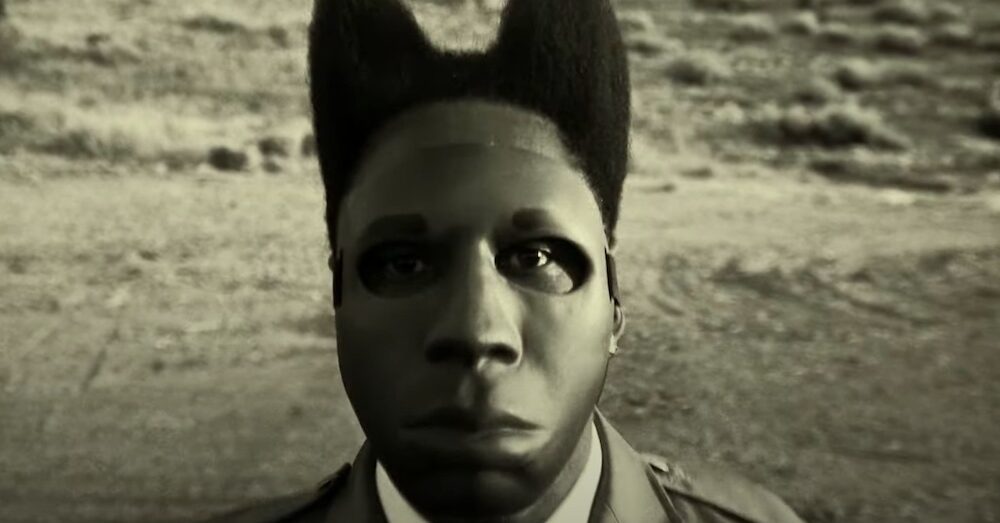It doesn’t take much for Tyler, the Creator to take an entire generation by storm. More than three years after his previous album, he posted a snippet of the opening track of “CHROMAKOPIA,” titled “St. Chroma.” Almost immediately, the internet blew up with excitement. While oscillating between frenzied, amped-up rap and introspective, soulful ballads, “CHROMAKOPIA” is an intimate look into Tyler’s complex persona.
“St. Chroma” acts as a rallying battle cry, an inflection point for what begins as a journey to define both his personal identity and public persona. The track’s rhythm evokes the sounds of soldiers marching in a line, emphasizing its quest-like nature. Featured artist Daniel Caesar delivers a chorus sure to linger in your head long after, singing “Can you feel the light inside? / Can you feel that fire?” building a demanding call to look within. Much of the track deliberates over an internal dilemma: to give in to this soul-searching or stay stagnant. Tyler addresses this himself, saying “I just need this time to myself to figure me out-out / Do I keep the light on or do I gracefully bow out?” which hints toward a broader struggle to make a decision about staying in the music industry.
The lead single, “Noid,” short for paranoid, delves into Tyler’s fears of being in the public eye, where he raps that “Privacy? Huh, yeah, right, I got a better shot in the NBA.” Citing a routine of constantly checking over his shoulder, looking under his bed at night and locking his windows reaffirms the curse that comes with immense fame. The song explores how this paranoia plays a role in his internal battle to keep creating work as an artist or escape a life of intense scrutiny and harassment from overzealous fans. Tyler explores this theme in terms of his career, but also within his relationships, especially through “Darling, I.” More laid back and playful, the track encapsulates his internal struggle with emotional commitment and security with a partner. “’Cause honestly, T is not perfect,” he admits. “So how can I get everything from one person? / I’m at the altar, but I’m still searchin’.” The theme of insecurity pervades “CHROMAKOPIA,” almost a personified monster chasing Tyler, never stopping until he confronts it. It seems to build as his career becomes more tenured, he becomes older and his fame grows larger.
However, these fears don’t stop the brash, high-energy tracks Tyler is notable for, effectively personified in “Sticky,” which features Lil Wayne, Sexyy Red and GloRilla. The track is reminiscent of past songs like “Who Dat Boy” or “NEW MAGIC WAND,” which are guaranteed to start a mosh pit during his concerts. “Sticky” offers a break from his soul-searching to reassert the persona Tyler is known for, the one where he believes he can say whatever he wants, such as, “Always talkin’ ‘bout potential, bitch, I am the better me / Jack of all trades, name a … who ahead of me / Must be God instead of me.” As the album cover suggests, Tyler takes on masks as personalities that switch as quickly as new insecurities present themselves to him.
The layered album’s most cathartic moment comes during the track “Like Him.” Tyler, who has always addressed his father’s absence in his music, uses the track as a coping mechanism. He addresses discovering that his father did actually want to play an active role in his life, while his mother pushed that possibility away. “Like Him” is a devastatingly personal, rare admittance of pure emotion: “How could I ever miss somethin’ / That I’d never had?” The song carries the weight of guilt, confusion and pain that comes with disillusionment, and the need for reconciliation between him and his mother about a decision that forever shaped his life. “Mama, I’m chasin’ a ghost,” he pleads in the chorus. “I don’t know who he is … I’m everything that I’ve strived to be / So do I look like him?” In this moment of vulnerability, Tyler’s unmasking of his complex past allows both him and listeners to resonate with the work, expanding the meaning of the track beyond just how enjoyable it is to listen to.
While not as career defining as 2019 album “IGOR” — which was a masterful blend between the experimental and the mainstream — “CHROMAKOPIA” presents a layered understanding of Tyler’s life as an artist and human. While at many times he uses his musical projects to be outlandish and push social boundaries, “CHROMAKOPIA” humanizes him and searches to better understand Tyler Okonma, the man behind the mask of Tyler, the Creator.
Contact Maggie Turner at [email protected].


























































































































































